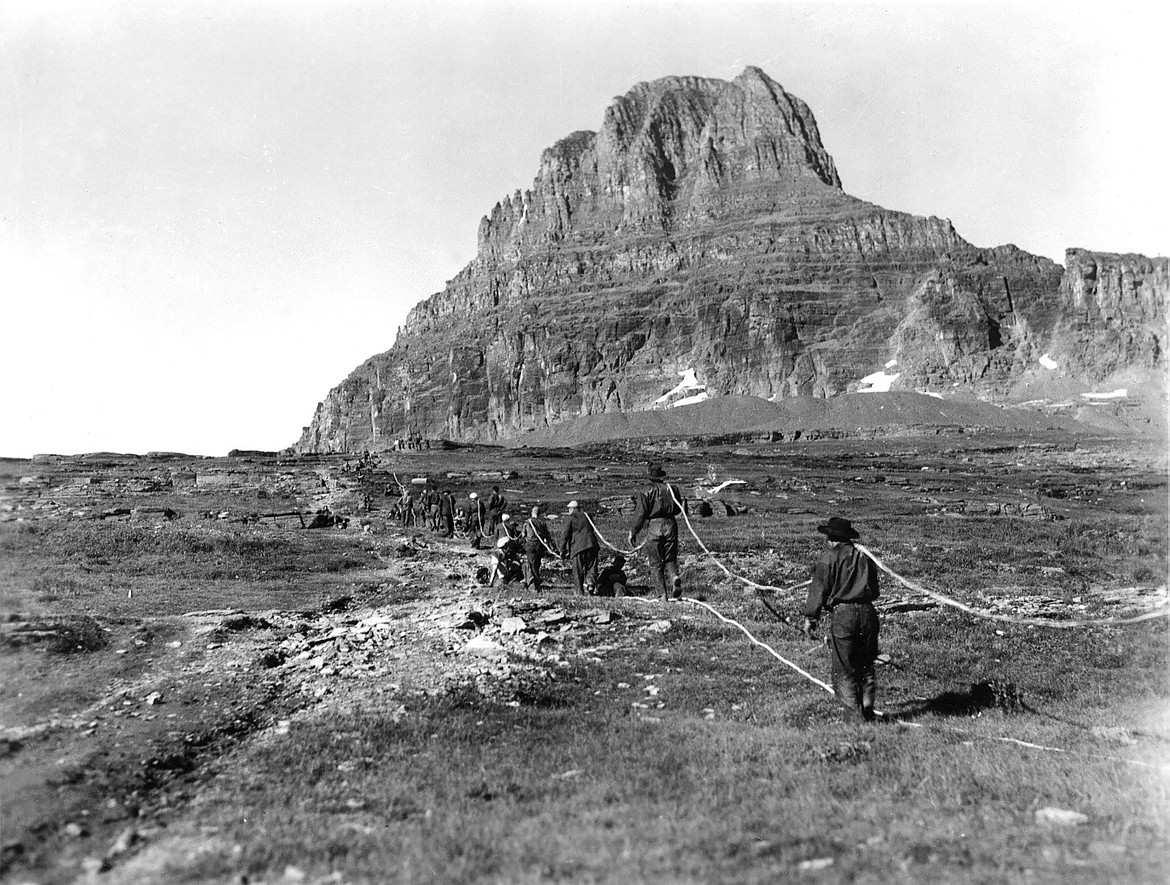The CCC in Glacier Park: New book looks at impact of Depression program on Glacier
By CHRIS PETERSON
Hungry Horse News
You can’t drive into the west entrance of Glacier National Park without seeing the work of the Civilian Conservation Corps.
They not only replanted the entire surrounding forest, they built the entrance station itself. The CCC was created by an act of Congress on March 30, 1933. It was part of President Franklin D. Roosevelt’s “New Deal” designed to help bring the country out of the Great Depression.
The CCC had a great impact on Glacier National Park, author and historian David R. Butler notes in his new book, “The Civilian Conservation Corps in Glacier National Park.”
Thousands of men worked on projects inside of Glacier over the course of seven years. Each camp had about 200 men and there was even a camp of black men, stationed near Anaconda Creek.
The federal government tried to integrate the camps, but they ended up separate by volition. The black men weren’t treated very well by the locals at Belton at the time, with signs in windows saying only whites would be served.
It was outright racism, Butler noted.
“It really shocked me,” he said in an interview last week.
But race aside, crews fought wildfires, built and maintained trails and planted entire forests.
The forests around Apgar and West Glacier, for example, had been razed by the 1929 Half Moon Fire. Crews went to work cutting down old snags. Some of the wood was simply piled up and burned, but a lot of it was loaded onto railcars and shipped east.
In the fiscal year 1935, for example, a total of 158 railcars were loaded with 80,000 pounds of logs, poles and posts.
A creosoting facility was set up in one camp in 1933. It made 1,978 telephone poles and 117 cords of firewood.
Crews were stationed on both sides of the divide during the CCC’s run. They built lookouts on Porcupine Ridge and Bear Mountain; they cleared logs from the newly formed Lake Sherburne, and cleared burned trees from the Heaven’s Peak Fire, which burned over the divide from the base of Heaven’s Peak into Many Glacier.
They also built some lodging that’s still used today.
The Swiftcurrent Motor Inn, for example, was built by the CCC.
But perhaps their greatest achievement came in the form of a telephone line.
In 1938, crews strung a telephone line from park headquarters to Lake McDonald Lodge and then up and over Logan Pass and Hidden Pass, which looks over Hidden Lake and then down to St. Mary.
The entire line was buried underground, too. If one looks closely while hiking to the Hidden Lake overlook, you can get a glimpse of the line, as it’s no longer in use and has risen to the surface.
The CCCs had a widespread influence on the Park, Butler noted. Most summers saw about 1,600 men spread out in camps in every major drainage and region of the park.
“They sang at the dedication of the Going-to-the-Sun Road (in 1933),” Butler noted. “They sang for Roosevelt when he was here (in 1934).”
Butler is no stranger to Glacier himself. He first visited Glacier while he was a sophomore in high school on a family vacation. When he turned 21, he got a job as a red bus driver and would go onto to a career as a geography professor at Texas State University.
His ties to Glacier have remained for the past several decades since those formative years, but on the research side of things. For example, he studied tree rings near the Goat Lick, which give clues to the avalanche cycles there. He also co-authored a scholarly book on the changing treeline in the park.
As far as the CCCs, Butler said he was impressed with the scope of their work.
“The geographic spread of their influence surprised and struck me,” he said.
“The Civilian Conservation Corps in Glacier National Park,” is published by America Through Time and distributed by Arcadia Publishing. It will soon be available at local bookstores and can be ordered online at: https://www.arcadiapublishing.com/

